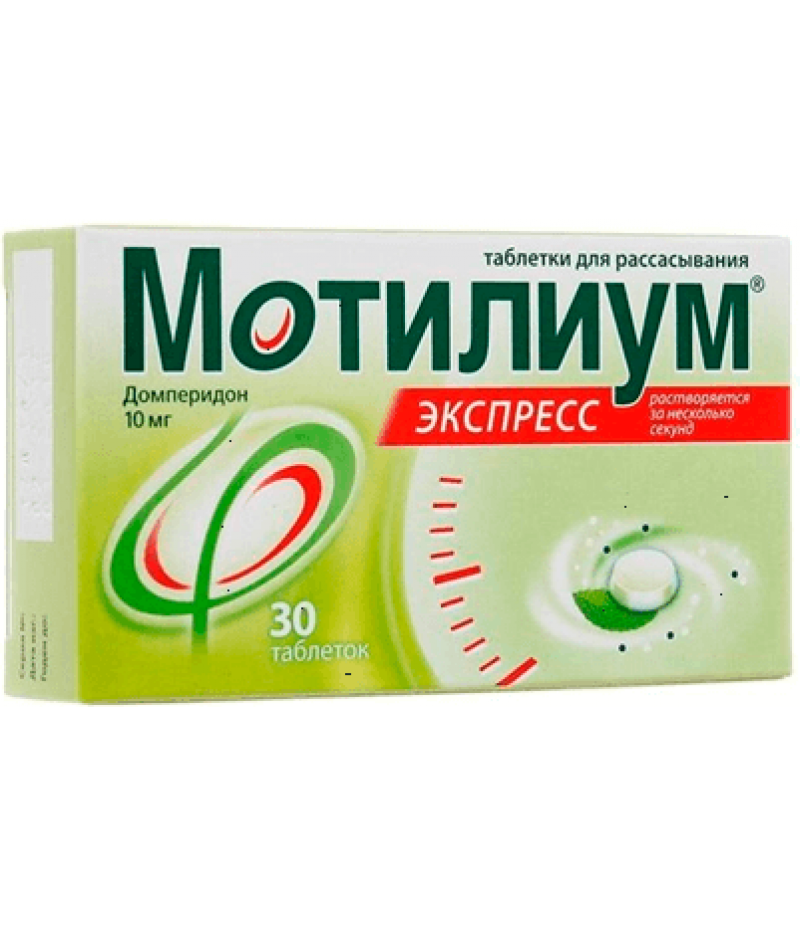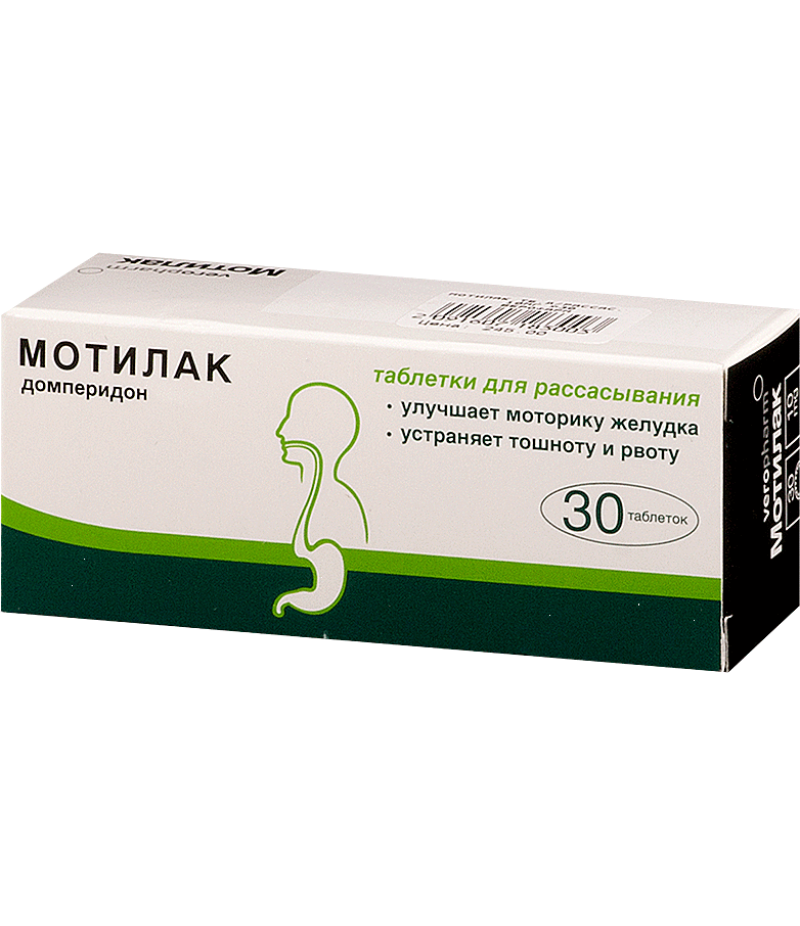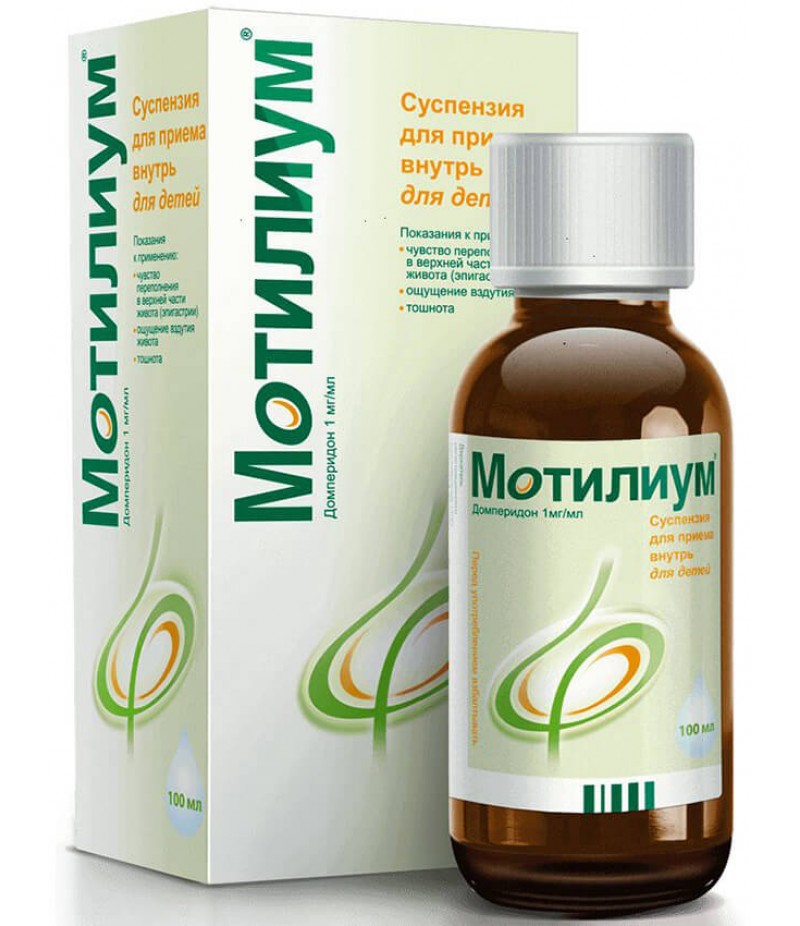Motilium Express tabs 10mg #10
- $20.95
- 3 or more $20.50
- Availability:In Stock
Motilium Express user manualYou can buy Motilium Express on this pageComposition Active substance (per 1 tablet): domperidone 10 mg. Excipients (per 1 tablet): gelatin 5.513 mg, mannitol 4.136 m..
Tags: tabs
Motilium Express user manual
You can buy Motilium Express on this page
Composition
Active substance (per 1 tablet): domperidone 10 mg.
Excipients (per 1 tablet): gelatin 5.513 mg, mannitol 4.136 mg, aspartame 0.750 mg, mint essence 0.300 mg, poloxamer 188 1.125 mg.
pharmachologic effect
Antiemetic, dopamine receptor blocker central
АТХ:
A.03.F.A.03 Domperidone
Pharmacodynamics
Domperidone is a dopamine antagonist with antiemetic properties. However, domperidone poorly penetrates the blood-brain barrier. The use of domperidone is rarely accompanied by extrapyramidal side effects, especially in adults, but domperidone stimulates the release of prolactin from the pituitary gland. Its antiemetic effect may be due to a combination of peripheral (gastrokinetic) action and antagonism to dopamine receptors in the chemoreceptor trigger zone. Animal studies and low drug concentrations found in the brain indicate a central effect of domperidone on dopamine receptors.
When administered intraperidone prolongs the duration of antrum and duodenal contractions, accelerates the emptying of the stomach and increases the pressure of the sphincter of the lower esophagus in healthy people. Domperidone has no effect on gastric secretion.
Pharmacokinetics
Domperidone is rapidly absorbed after ingestion on an empty stomach, peak concentrations in the plasma are reached within 30-60 minutes. Low absolute bioavailability of domperidone when taken orally (approximately 15%) is associated with an intensive metabolism of the first passage in the intestinal wall and liver.
Domperidone should be taken 15-30 minutes before meals. Reduction of acidity in the stomach leads to a violation of absorption of domperidone. Bioavailability during ingestion decreases with the preliminary intake of cimetidine and sodium bicarbonate. When taking the drug after a meal, maximum time is required to achieve maximum absorption, and the area under the pharmacokinetic curve (AUC) increases slightly.
When ingesting domperidone does not accumulate and does not induce its own metabolism; the peak plasma concentration of 21 ng / ml 90 minutes after 2 weeks of oral administration at a dose of 30 mg per day was almost the same as a peak plasma concentration of 18 ng / ml after the first dose. Domperidone binds to plasma proteins by 91-93%. Studies of distribution with a radioactive label in animals showed a significant distribution of the drug in the tissues, but low concentrations in the brain. Small amounts of the drug penetrate the placenta in rats.
Domperidone undergoes rapid and intensive metabolism by hydroxylation and N-dealkylation. In vitro metabolism studies with diagnostic inhibitors have shown that the CYP3A4 isoenzyme is the main form of cytochrome P450 involved in the N-dealkylation of domperidone, while CYP3A4, CYP1A2 and CYP2E1 participate in the aromatic hydroxylation of domperidone. Excretion in urine and feces is 31% and 66% of the dose when taken orally, respectively. The proportion of the drug excreted unchanged is small (10% with feces and approximately 1% in urine). Plasma half-life after a single oral intake is 7-9 hours in healthy volunteers, but increases in patients with severe renal failure.
In these patients (serum creatinine> 6 mg / 100 ml, i.e.> 0.6 mmol / L), the half-life of domperidone increases from 7.4 to 20.8 hours, but the drug concentration in the plasma is lower than in healthy volunteers . A small amount of unchanged drug (about 1%) is excreted by the kidneys.
In patients with impaired liver function of moderate severity (score of 7-9 points for Pugh, Child B-grade P), AUC and maximum plasma concentration (Cmax) of domperidone were 2.9 and 1.5 times higher than in healthy volunteers respectively. The unbound fraction was increased by 25%, and the half-life increased from 15 to 23 hours. Patients with mild violations of liver function showed slightly reduced systemic levels of the drug compared to those in healthy volunteers based on Cmax and AUC without changes in protein binding or half-life. Patients with severe impairment of liver function were not studied.
Motilium Express, indications for use
a) Complex of dyspeptic symptoms, often associated with delayed emptying of the stomach, gastroesophageal: reflux, esophagitis:
- a feeling of overflow in the epigastrium, a sensation of bloating, pain in the upper abdomen;
- belching, flatulence;
- nausea, vomiting;
- Heartburn, belching.
b) Nausea and vomiting of a functional, organic, infectious origin, as well as caused by radiotherapy, drug therapy or a violation of diet. A specific indication is nausea and vomiting caused by dopamine agonists in the case of Parkinson's disease (such as levodopa and bromocriptine).
Contraindications
- established intolerance of the drug and its components;
- Prolactin-secreting pituitary tumor (prolactinoma);
- simultaneous administration of oral forms of ketoconazole, erythromycin, or other potent inhibitors of the CYP3A4 isoenzyme, causing prolongation of the QT interval, such as fluconazole, voriconazole, clarithromycin, amiodarone and telithromycin (see "Interactions" section);
- gastrointestinal bleeding, mechanical obstruction or perforation (i.e., when stimulation of gastric motility may be dangerous);
- Children's age up to 5 years (for this dosage form);
- violations of the liver function of medium and severe degree;
- phenylketonuria.
Carefully:
- impaired renal function;
- disturbance of rhythm and conduction of the heart, including prolongation of the QT interval, electrolyte imbalance, congestive heart failure.
Dosing and Administration
Inside. It is recommended to take Motilium Express tablets before meals, in case of their intake after eating, the absorption of domperidone may slow down. The duration of continuous use of the drug without a doctor's recommendation should not exceed 28 days.
Adults and children over 12 years of age and weighing 35 kg or more:
1-2 tablets of 10 mg 3-4 times a day. The maximum daily dose is 8 tablets (80 mg).
Children aged 5 to 12 years and weighing 35 kg or more:
1 tablet of 10 mg 3-4 times a day. The maximum daily dose of domperidone is not more than 8 tablets (80 mg).
Use in children Resolute tablets Motilium Express are indicated only for children weighing 35 kg or more, in pediatric practice, the Motilium suspension should generally be used. Use in patients with impaired renal function The frequency of taking Motilium should be reduced to 1-2 times per day, depending on the severity of the disorders, a dose reduction may also be required. A regular examination of such patients should be carried out (see section "Special instructions").
Use in patients with impaired hepatic function
Do not use Motilium Express for violations of the liver function of medium and severe degree. With light violations of liver function, dose adjustment is not required.
INDICATIONS FOR USE
Because the resorption tablets are rather fragile, they should not be pierced through the foil to avoid damage. In order to get a tablet from the blister, you need the following:
- take the foil by the edge and completely remove it from the cell in which the tablet is located;
- gently push downwards;
- remove the tablet from the package.
Put the tablet on the tongue. Within a few seconds it will break up on the surface of the tongue, it can be swallowed with saliva, without washing down with water.
Application in pregnancy and lactation
Application during pregnancy
Data on the use of domperidone during pregnancy is not enough. To date, there is no evidence of an increased risk of developmental malformations in humans. Nevertheless, Motilium should be prescribed during pregnancy only if its use is justified by the expected therapeutic benefit.
Application during lactation
In women, the concentration of domperidone in breast milk is 10 to 50% of the corresponding plasma concentration and does not exceed 10 ng / ml. The total amount of domperidone excreted into breast milk is less than 7 μg per day when the maximum permissible doses of domperidone are administered. It is not known whether this level has a negative effect on newborns. In this regard, when using the drug Motilium during lactation should stop breastfeeding.
Side effects of Motilium Express
Undesirable reactions observed in ≥1% of patients taking Motilium: depression, anxiety, decreased or absent libido, headache, drowsiness, akathisia, dry mouth, diarrhea, rash, itching, galactorrhea, gynecomastia, pain and sensitivity in the area mammary glands, menstrual disorders and amenorrhea, lactation, asthenia.
Undesirable reactions observed in <1% of patients taking Motilium: hypersensitivity, urticaria, swelling and discharge from the mammary glands.
According to spontaneous reports of undesirable phenomena
The following undesirable effects were classified as follows: very frequent (≥ 10%), frequent (≥ 1%, but <10%), not frequent (≥ 0.1%, but <1%), rare (≥ 0.01% but
Impaired immune system. Very rarely: anaphylactic reactions, including anaphylactic shock.
Mental disorders. Very rarely: agitation, nervousness (mainly in newborns and children).
Violations from the nervous system. Very rarely: extrapyramidal disorders, convulsions (mainly in newborns and children).
Disorders from the cardiovascular system. Very rare: prolongation of QT interval, ventricular arrhythmia *, sudden coronary death *.
Disturbances from the skin and subcutaneous tissues. Very rarely: Quincke's edema, hives.
Disorders from the kidneys and urinary tract. Very rarely: retention of urine.
Laboratory and instrumental data. Very rarely: abnormalities in laboratory parameters of liver function, increased prolactin levels of blood.
* Some epidemiological studies have shown that the use of domperidone may be associated with an increased risk of developing serious ventricular arrhythmias or sudden death. The risk of these events is more likely in patients over 60 years of age and in patients taking the drug at a daily dose of more than 30 mg. It is recommended to use domperidone in the lowest effective dose in adults and children.
special instructions for Motilium Express
When combined with the use of the drug Motilium Express with antacid or antisecretory drugs, the latter should be taken after meals, and not before meals, i.e. they should not be taken concurrently with Motilium Express.
Use in children
Motilium Express in rare cases can cause neurological side effects (see the section "Side Effects"). The risk of neurological side effects in young children is higher, since metabolic functions and the blood-brain barrier in the first months of life are not fully developed. In this regard, the recommended dose should be strictly adhered to (see section "Method of administration and dose"). Neurological adverse effects may be caused in children by an overdose of the drug, but other possible causes of such effects should be taken into account.
Application in diseases of the kidneys
Since a very small percentage of the drug is excreted by the kidneys unchanged, the correction of a single dose in patients with renal insufficiency is not required. However, with the re-appointment of Motilium Express, the frequency of application should be reduced to one or two times a day, depending on the severity of renal dysfunction, and it may also be necessary to reduce the dose. With prolonged therapy, patients should be under regular supervision.
Effects on the cardiovascular system
Some epidemiological studies have shown that the use of domperidone may be associated with an increased risk of serious ventricular arrhythmias or sudden death (see "Side Effects" section). Risk may be more likely in patients over 60 years of age and in patients taking the drug at daily doses of more than 30 mg. It is recommended to use domperidone in the lowest effective dose in adults and children.
If the medicine has become unusable or the expiration date has expired, do not throw it into the waste water and into the street! Place the drug in a bag and put it in the trash. These measures will help protect the environment!
Effect on the ability to drive transp. cf. and fur:
Motilium Express does not have or has a negligible effect on the ability to drive and work with machinery.
Drug Interactions
Anticholinergic drugs can neutralize the effect of the drug Motilium Express. Bioavailability of the drug Motilium Express at ingestion decreases after the previous intake of cimetidine or sodium bicarbonate. Do not take antacid and antisecretory drugs at the same time as domperidone, as they reduce its bioavailability after ingestion (see section "Special instructions").
The main role in the metabolism of domperidone is played by the CYP3A4 isoenzyme. The results of in vitro studies and clinical experience show that simultaneous use of drugs that significantly inhibit this isoenzyme may cause an increase in domperidone concentrations in plasma. Among the powerful inhibitors of CYP3A4 are:
- Azole antifungal drugs such as fluconazole *, itraconazole, ketoconazole * and voriconazole *;
- Antibiotics from the macrolide group, for example, clarithromycin * and erythromycin *;
- HIV protease inhibitors, for example, amprenavir, atazanavir, fosamprenavir, indinavir, nelfinavir, ritonavir and saquinavir;
- Calcium antagonists, such as diltiazem and verapamil;
- Amiodarone *;
- aprepitant;
- Nefazodone;
Telithromycin.
(Drugs marked with an asterisk also extend the QT interval [see Contraindications]).
In a number of studies of the pharmacokinetic and pharmacodynamic interactions of domperidone with ketoconazole and erythromycin when ingested in healthy volunteers, it has been shown that these drugs significantly inhibit the metabolism of the first passage through the CYP3A4 isoenzyme. With the simultaneous administration of 10 mg of domperidone 4 times a day and 200 mg of ketoconazole 2 times a day, the QT interval was prolonged by an average of 9.8 ms during the entire follow-up period, at some points the changes ranged from 1.2 to 17.5 ms. With simultaneous administration of 10 mg of domperidone 4 times a day and 500 mg of erythromycin 3 times a day, the QT interval was prolonged by an average of 9.9 ms during the entire follow-up period, at some points the changes varied from 1.6 to 14.3 ms. In each of these studies, Cmax and AUC domperidone were increased approximately three-fold (see section "Contraindications").
At present, it is not known what contribution to the change in the QT interval is made by increased concentrations of domperidone in plasma.
In these studies, monotherapy with domperidone (10 mg four times a day) resulted in an extension of the QT interval by 1.6 ms (ketoconazole study) and 2.5 ms (erythromycin study), whereas monotherapy with ketoconazole (200 mg twice daily) and monotherapy with erythromycin (500 mg three times daily) led to an extension of the QT interval by 3.8 and 4.9 ms, respectively, throughout the observation period.
In another study using multiple doses in healthy volunteers, there was no significant prolongation of the QT interval during stationary domperidone monotherapy (40 mg four times a day, a total daily dose of 160 mg, which is 2 times the recommended maximum daily dose). At the same time, the concentrations of domperidone in plasma were similar to those in studies of the interaction of domperidone with other drugs. Theoretically, since Motilium has a gastrokinetic effect, it could affect the absorption of concomitant oral preparations, in particular sustained-release preparations or enteric-coated preparations. However, the use of domperidone in patients on paracetamol or digoxin did not affect the level of these drugs in the blood.
Motilium Express can be taken at the same time as:
- Neuroleptics, the effect of which it does not increase;
- with dopaminergic receptor agonists (bromocriptine, levodopa), as it depresses their unwanted peripheral effects, such as digestive disorders, nausea and vomiting, without affecting their central effects.
Overdose
Symptoms
Symptoms of overdose occur most often in infants and children and can include: agitation, impaired consciousness, convulsions, disorientation, drowsiness and extrapyramidal disorders.
Treatment
There is no specific antidote for domperidone. In case of an overdose, it is recommended to wash the stomach and take activated charcoal, close supervision and supportive therapy. To correct extrapyramidal manifestations, anticholinergics and anti-Parkinsonics can be used.
Storage conditions
Store in a dry place at a temperature of no higher than 25 ° C.
Keep out of the reach of children. Keep in original packaging.
Shelf life - 2 years. Do not use after the expiration date.
Terms of sell
You don't need a prescription to buy Motilium Express.




